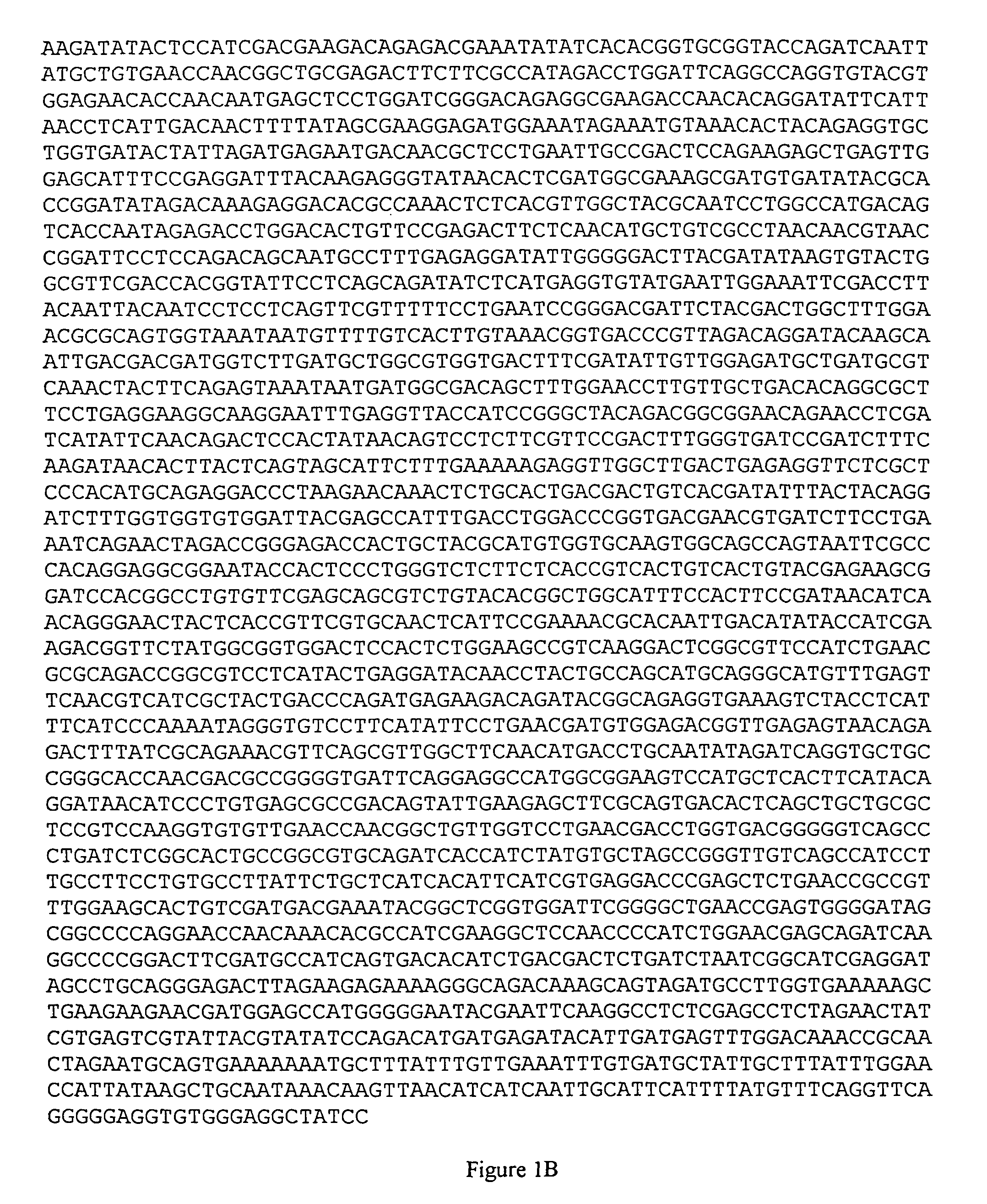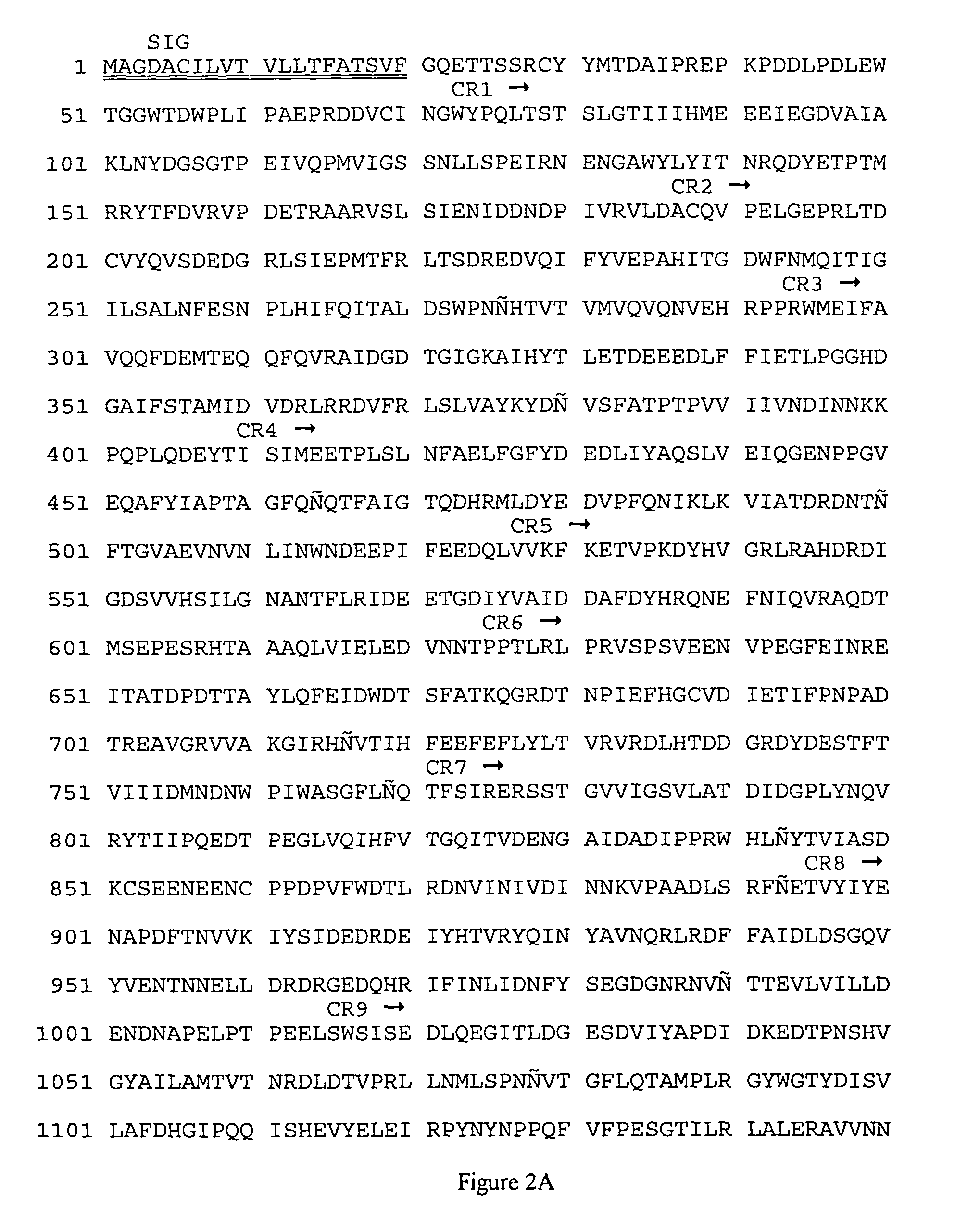Pectinophora gossypiella (pink bollworm) Bacillus thuringiensis toxin receptor BT-R2
a technology of pectinophora and gossypiella, which is applied in the field of receptors, can solve the problems of reducing the overall cotton yield by more than 1.7 million bales, and causing a loss of about $1.224 billion
- Summary
- Abstract
- Description
- Claims
- Application Information
AI Technical Summary
Benefits of technology
Problems solved by technology
Method used
Image
Examples
example 1
Specificity of Purified Toxins
[0047]Recombinant protoxins Cry1Aa, Cry1Ab, and Cry1Ac (Bacillus Genetic Stock Center, Ohio State University) were prepared from E. coli JM-103 and trypsinized essentially as described by Lee et al. J. Biol. Chem. (1992) 267: 3115. In addition, the soluble trypsinized 60 kD toxins were subjected to FPLC NaCl salt gradient purification over an HR-5 / 5 Mono-Q anion exchange column (PHARMACIA™) prior to quantitation, radio-iodination, and use in bioassays. Cry3A crystal protein from B. thuringiensis subsp. tenebrionis was solubilized in 3.3 M NaBr and treated with papain, and the resulting 67 kD toxin was purified by the method of Li et al. Nature (1991) 353: 815. The 65 kD Cry11A toxin was isolated from B. thuringiensis subsp. israelensis via solubilization as described by Chilcott et al. J. Gen. Micro (1988) 134: 1551 and further purified by anion-exchange FPLC. All toxin protein quantitations were performed using the bicinchoninic acid method (PIERCE CHE...
example 2
Characterization of the BT-R2 Receptor
[0050]Early fourth-instar larvae were kept on ice for 1 hr and midguts were surgically removed from the larvae. BBMW were prepared from midgut tissues by the differential magnesium precipitation method of Wolfersberger, et al., Comp. Biochem. Physiol. (1987) 86A: 30, in the presence of protease inhibitors (5 mg / ml pepstatin, antipain, aprotonin, leupeptin, 1 mM PMSF, and 5 mM benzamidine). The final pellet was resuspended in buffer A (300 mM mannitol, 5 mM EGTA, and 17 mM Tris-HCl, pH 7.5) containing the protease inhibitors, flash frozen in liquid nitrogen, and stored at −85° C.
[0051]Cry toxins were radioiodinated using the chloramine T method (Hunter and Greenwood, Nature (1962) 194: 495, with 125I—Na (NEN DUPONT™). Ten μg of toxin were mixed with 5 μl of 125I—Na (0.5 mCi) in 100 μl of NaHPO4 buffer (0.5 M, pH 7.4) with 25 μl of Chloramine T (4 mg / ml). The reaction mixture was agitated for 20–25 seconds at 23° C. and the reaction was stopped by...
PUM
| Property | Measurement | Unit |
|---|---|---|
| Fraction | aaaaa | aaaaa |
| Cytotoxicity | aaaaa | aaaaa |
| Affinity | aaaaa | aaaaa |
Abstract
Description
Claims
Application Information
 Login to View More
Login to View More - R&D
- Intellectual Property
- Life Sciences
- Materials
- Tech Scout
- Unparalleled Data Quality
- Higher Quality Content
- 60% Fewer Hallucinations
Browse by: Latest US Patents, China's latest patents, Technical Efficacy Thesaurus, Application Domain, Technology Topic, Popular Technical Reports.
© 2025 PatSnap. All rights reserved.Legal|Privacy policy|Modern Slavery Act Transparency Statement|Sitemap|About US| Contact US: help@patsnap.com



